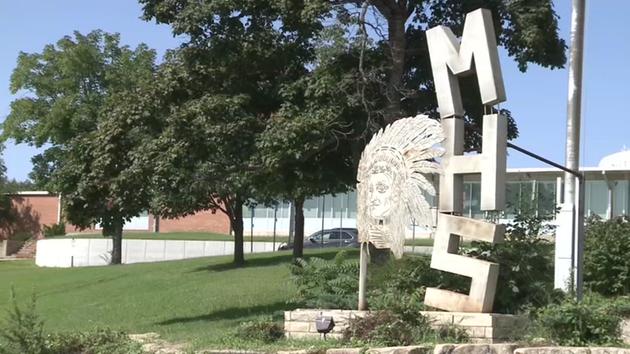








Posted: Tuesday, August 30, 2016 5:44 pm
Odessa American oanews@oaoa.com
Posted on Aug 30, 2016
by Odessa American
A 45-year-old Midland man died Monday from an apparent electrocution on an oilfield lease near Goldsmith, the Ector County Sheriff’s Office reported.
The Ector County Medical Examiner’s Office identified the man as Bradley Richard Bell. Sgt. Gary Duesler, spokesman for the sheriff’s office, said the worker was an employee of GE Oil and Gas.
Emergency responders were called at about 9:30 p.m. Monday to an electrical control building near Scharbauer Street and North Station Road by fellow workers who reportedly discovered the worker dead, Duesler said. The deputy said the man’s associates had tracked Bell by GPS after struggling to get in touch with him.
Medical Examiner Chuck Moad said Bell’s body would be sent for autopsy in Tarrant County. In the meantime, the sheriff’s office was investigating the case as an unattended death apparently caused by electrocution.
======================
GE’s Repair Technology Center of Excellence is constantly developing
new and more advanced repair techniques for oil and gas applications. We
employ the latest innovations including Advanced Welding & Brazing,
ACR Cleaning and Advanced Metallurgy to ensure the highest quality
restoration of parts available in the industry. We also draw on diverse
technologies and methods from across the entire GE organization,
resulting in repair solutions that help customers reduce costs and
downtime by considerably extending the life of components in high-wear
conditions. All workshops in our global network use the same innovative
technologies and high standards. No matter where your site is located,
you will never have to compromise repair quality.
Spare parts
Using genuine GE parts is a best-maintenance practice and key factor
in protecting and improving the performance, availability and
reliability of your GE rotating and static equipment over the entire
lifecycle. Other parts available in the market are not comparable to
GE’s OEM parts, because ours are not just designed to replace current
parts – but often to enhance machine performance as new technologies
become available. Our parts services include a large inventory of parts
located in key regions to improve customers’ asset reliability;
e-Catalog for easy 24/7 online part identification and requests for
quotations; inventory management for spare, interchangeable and obsolete
parts; and spare parts optimizing services.
Used Serviceable Material
Our Used Serviceable Material service allows operators to optimize
cash flow versus remaining life of components for key gas turbine and
path components and the entire engine for selected technologies.
Refurbishment and residual life estimates are backed by the latest OEM
technology.
Training & Talent Development
At GE Oil & Gas, we are committed to helping our customers’
develop their workforces by sharing a common vision of operational
excellence to help them face industry challenges. We work in partnership
with our customers to develop human capital through a structured
process aimed at building both technical and leadership skills. Our
diversified training products can be combined to ensure consistency of
results for each competency need. Our training designers and engineers
are always available to discuss options and possibilities with your
organization, your human resources department or your technical team
leader.
We provide a complete approach to developing knowledge, with courses
that deliver in-depth training on our equipment and auxiliaries along
with the skills needed to operate the machinery effectively for maximum
production, efficiency and environmental compliance. We also offer
courses in non-technical areas such as leadership and management,
tailored to a variety of applications in the oil and gas industry.
Instructors are field-seasoned experts who combine their
understanding of theory with practical, in-field operating experience.
The quality training they provide is a prerequisite for improving the
skills of operating and maintenance personnel, to ensure safety and
superior equipment efficiency and availability. Courses and
documentation are designed to meet specific customer needs, focusing on
GE equipment.
We operate globally with a strong presence at the regional level to
ensure a deep understanding of local dynamics and business cultures.
Courses can be offered around the world at customer sites or in any of
our GE Training Centers worldwide – all delivered with the same high
quality. Courses and technical literature are provided in a variety of
languages.
Interactive and multimedia technology solutions have been designed
and introduced to provide a smart and useful complement to our training
courses:
- With our Learning Management System you can plan your career or
manage your team’s professional development, measure training results
and run reports, track learning activities, easily assign classes and
assess your competencies to identify gaps and learning objectives.
- The iManual App is our digital customer training solution for
storing and organizing multiple manuals and is available for iOS and
android devices.
- e-Training solutions are available on DVD and include video and
interactive sessions on centrifugal compressor or gas turbine operation
and maintenance procedures.
Services
Field Services
Highly qualified, well-planned maintenance is fundamental in order to
get consistently high performance and long life from your machinery.
GE’s expert teams can be quickly mobilized to deliver the highest
quality service anywhere in the world. We have pools of trained Field
Engineers located close to customer premises. We provide expert service
for all GE products, including heavy-duty and aeroderivative machinery;
gas and steam turbines; reciprocating and centrifugal compressors; and
Speedtronic control panels. We invest significant resources to train,
evaluate and enhance the knowledge and skills of our people. Our Field
Engineers can leverage the latest technologies to enhance site
performance and are supported by the specialized resources of our
Engineering division for more detailed analysis of field data,
additional evaluation of maintenance alternatives, and various other
optimization procedures. This level of advanced engineering support
makes the difference between satisfactory and exceptional results.






















